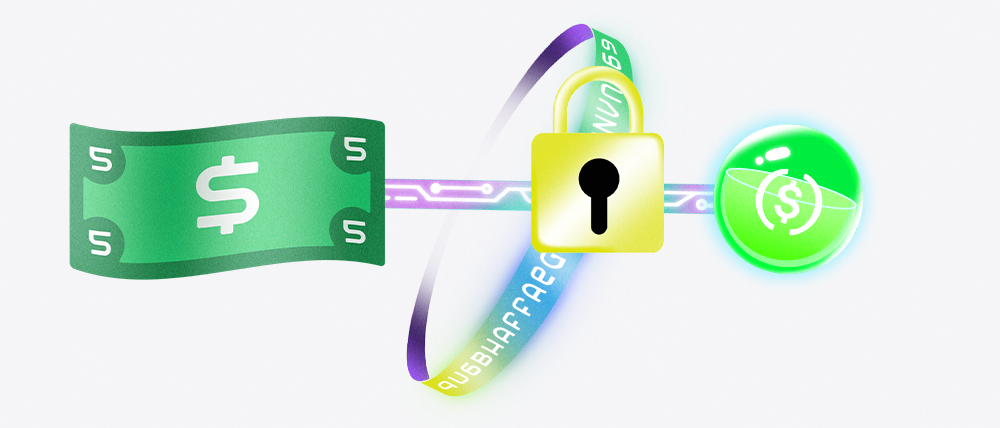Lesson 6
What are stablecoins?
Pegged to a reference asset, stablecoins can be a useful tool in crypto whether for payments, trading or as an onramp

In today’s world of web3 and DeFi, stablecoins are becoming more and more popular. They provide a “stable” alternative to some of the higher-volatility cryptocurrencies out there while still offering some of the advantages of being a digital currency. This means you can hold currency in digital form without worrying about the value changing too much.
Let’s get into the details a bit!
Why are stablecoins helpful for DeFi?

Stablecoins are just like other cryptocurrencies, allowing you to send, receive, and hold money digitally. But they have a significant advantage–they don’t come with the risk or volatility that many cryptocurrencies do.
Here’s a quick example of why the stability of a currency is essential:
The price of Bitcoin went from around $4,000 to $60,000 between 2020 and 2021 and then dropped to half that value in the following two months. If you were using Bitcoin as a means of exchange or to purchase goods, this kind of swing in value could be frustrating. Imagine you’re running a business and recently sold your goods for some Bitcoin. A few days later, the price declines abruptly. Now you have no profit and insufficient cash reserves to keep the business open. As a consumer, you can run into the same problem… if a cryptocurrency’s value swings down right before you are about to buy something, you might find yourself unable to afford it overnight!
This example helps demonstrate why stablecoins are important. A currency has to remain stable to serve as a medium of exchange.
While several established stablecoins are out there, it’s worth noting that the industry as a whole is still relatively nascent and moving fast. In this lesson, we will boil stablecoins down into two categories: fiat-collateralized stablecoins and algorithmic stablecoins.
What’s the difference between an Algorithmic and a collateralized stablecoin?

The stablecoin conversation is continuing to change.
For good reason, collateralized stablecoins are the most commonly used form of stablecoins today. They are partially or fully collateralized (backed) by the currency they follow. This means they maintain a reserve of a fiat currency (or currencies) that they are tied to. In an ideal world, these reserves should be maintained by independent custodians that are regularly audited. These are things that should always be considered and researched before buying. Tether (USDT) and Circle (USDC) are popular stablecoins backed by U.S. dollar reserves and denominated at parity with the dollar.
Algorithmic stablecoins are much less common today and they rely on rules of supply and demand to maintain their price-bridge to fiat currencies. Their value is kept stable by controlling their supply with a script or formula. The algorithm ensures that the live price always equals the price of the currency to which it is anchored. These stablecoins don’t necessarily hold reserve assets, which some could argue makes them more risky.*
*In May of 2022 The price of the TerraUSD (UST) algorithmic stablecoin plunged more than 60%, obliterating its peg to the U.S. dollar. https://www.bloomberg.com/news/articles/2022-05-11/terrausd-stablecoin-plunges-as-crypto-market-awaits-rescue
Not all stablecoins are created equal

We’ve just started to scratch the surface of what makes a currency a stablecoin, but knowing how different they can be is essential. Some stablecoins are pegged to the US dollar, and some are pegged to other currencies. Some are even pegged to commodities like gold, silver, or oil. Since stablecoins are all issued by different institutions, there can be a wide range of trust or volatility. Some are accepted in every major exchange, while others are selectively available.
Every stablecoin today has its own unique set of differences and benefits, and more are still to come. As the DeFi landscape evolves, a stable currency becomes increasingly important for facilitating exchanges.
